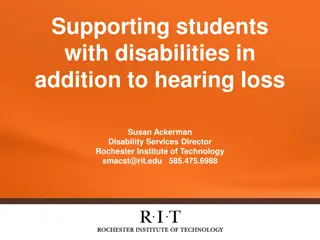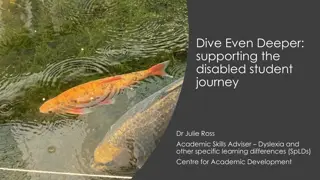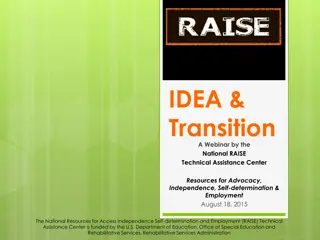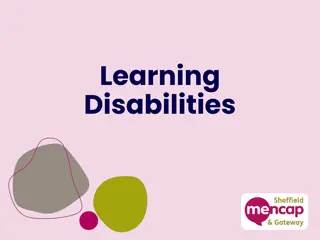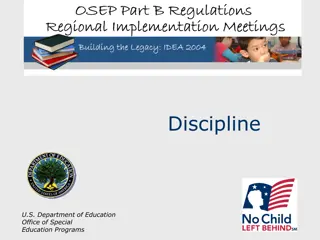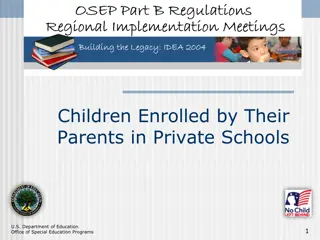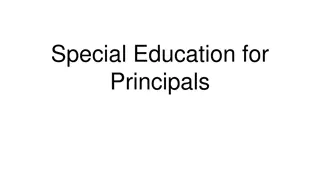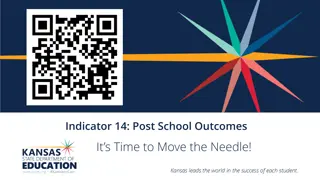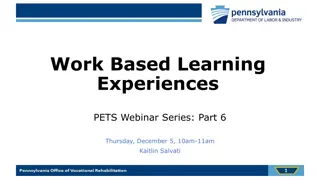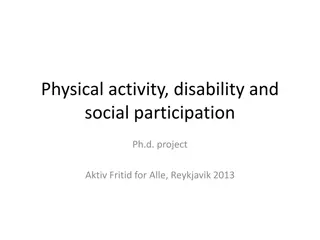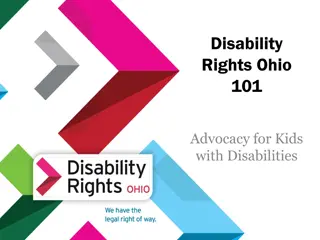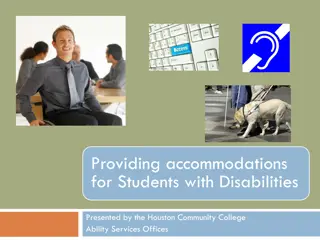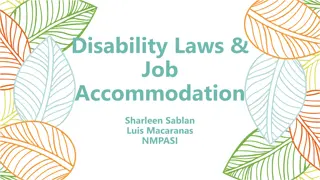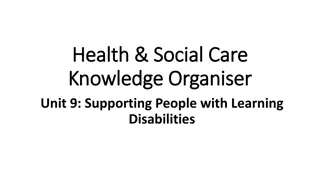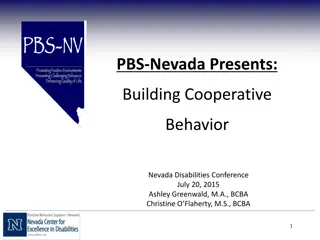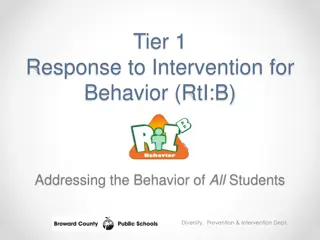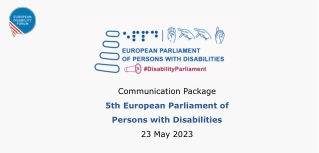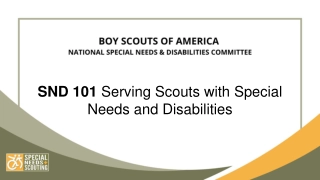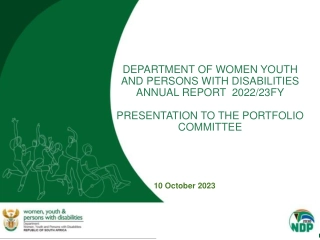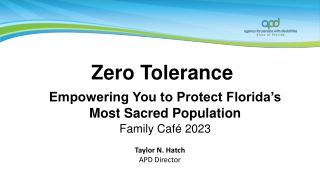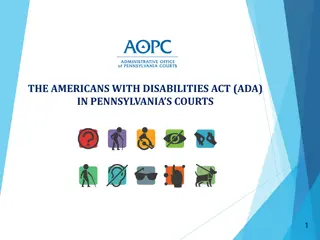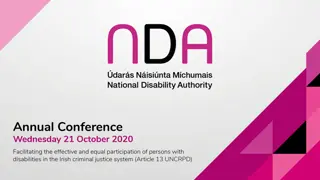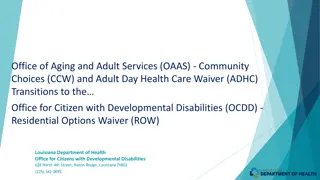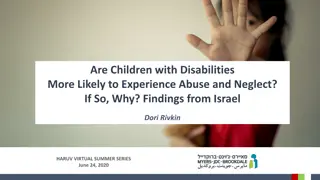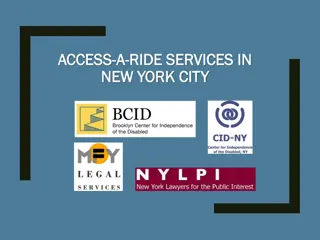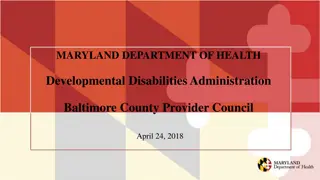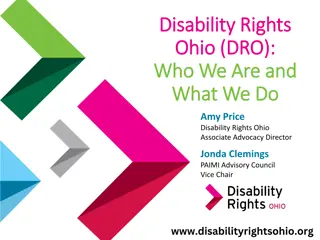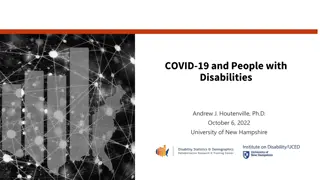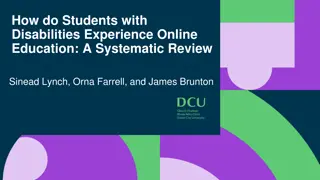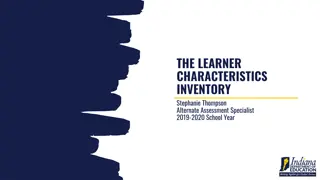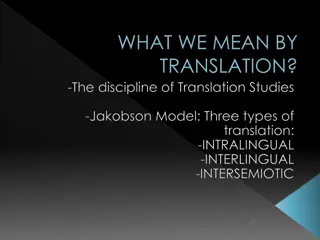Understanding Discipline Practices for Students with Disabilities
This resource explores the legal framework around disciplining students with disabilities, emphasizing the provision of a free appropriate public education (FAPE) in the least restrictive environment. It delves into the background, including the Supreme Court's rulings, and highlights the importance of due process rights for all students. The content addresses disciplinary issues, unilateral changes of placement, and the criteria for a change of placement due to disciplinary removals, offering insights for educators and parents alike.
Download Presentation

Please find below an Image/Link to download the presentation.
The content on the website is provided AS IS for your information and personal use only. It may not be sold, licensed, or shared on other websites without obtaining consent from the author. Download presentation by click this link. If you encounter any issues during the download, it is possible that the publisher has removed the file from their server.
E N D
Presentation Transcript
Disciplining Students with Disabilities Mitchell L. Yell, Ph.D. myell@sc.edu University of South Carolina
IDEA requires that all eligible students with disabilities receive a free appropriate public education (FAPE) in the least restrictive environment (LRE). This includes students who are exhibit severe problem behavior, are seriously disruptive, or violent.
OSERS Dear Colleague Letter on Discipline https://sites.ed.gov/idea/files/q a-addressing-the-needs-of- children-with-disabilities-and- idea-discipline-provisions.pdf
Background Information The U.S. Supreme Court addressed discipline of in Honig v. Doe (1988) and The IDEA Amendments of 1977 added discipline to the procedural safeguards of the IDEA. The law has not changed dramatically since that time Bottom Line-Federal law provide students with disabilities that students without disabilities do not receive
The Primary Problem That Led to the Dual Disciplinary Standard: Unilateral Changes of Placement
Supreme Courts Ruling in Honig v. Doe, 1988 Congress intended to strip schools of the traditionally employed to exclude disabled students, particularly emotionally disturbed students, from school. Congress did not leave educators hamstrung when confronting the problems posed by potentially dangerous special education students Schools may use in-school discipline or short-term suspensions, such as detention, timeouts, and or short-term suspensions (no more than 10 days.
Change of Placement Because of Disciplinary Removals Occurs if 1. The removal is for more than 10 consecutive school days 2. The child has been subjected to a series of removals that constitute a pattern 34 CFR 300.536 (a)
Due Process Rights All students, those with & without disabilities, have due process rights when suspended (Goss v. Lopez, 1975) 1. Notify the child of the charges that lead to suspension (oral or written) 2. Students must have an opportunity to tell their side of the story
Schoolwide Discipline Plans Schoolwide plans codes of conduct Reasonable & clear school-related rules Rewards & consequences Students with disabilities, Section 504 or IDEA eligible, are subject to the schoolwide policy unless it conflicts with the IEP, includes consequences that change placement IEP teams may use the IEP to confirm that students are included in the schoolwide plan
Discrimination: The unequal treatment of students with disabilities on the basis of their disability
OCR https://www2.ed.gov/ab out/offices/list/ocr/docs/ 504-discipline- guidance.pdfx
Four Ways that LEAs Discriminate When Using Discipline Discipling students with disabilities by taking actions that a) are not used with nondisabled students who exhibit similar misbehavior; b) are more harsh than those used with nondisabled students who exhibit similar misbehavior; c) are prohibited in a student s IEP, 504 plan, or behavior intervention plan. d) unilaterally change a student s placement
In-School Discipline School official are less likely to make a mistake by using in school disciple However, if in-school discipline is used excessively, is unduly harsh, or conflicts with a student s IEP it may violate the IDEA If students with disabilities are subjected to disciplinary procedures and students with disabilities are not-that may be a violation of Section 504
Out-of-School Suspensions A suspension out of school is much more likely to be a change of placement The key to compliance for OSS is keeping track of the number of days that the student has been suspended out of school
FAPE Free Zone (Jim Walsh) The school administrator has 10 golden tickets in which they can remove as student and do not need to provide a FAPE When the golden tickets are gone, they are gone!
What Counts as Day? Suspension from school for a full school day Portions of a school day that a child has been suspended may be considered a removal (71. Fed. Reg. p. 46715, 2006) In-school suspension Bus removals
In-School Suspension ISS generally does not violate the IDEA by changing placement even if over 10 consecutive days as long as 1. The student continues to access the general curriculum, 2. The student continues to receive all special education and related services, 3. Continues to participate with student who are not disabled (71, Fed. Reg. p. 46715, 2006) Note: ISS must not become a primary placement for the student
Suspension From the Bus According to the Department of Education either can amount to a suspension, subject to the 10-day rule if the bus is included as a required service in a student s IEP (71, Fed. Reg. p. 46715, 2006) If transportation is not a related service the child and his or her parents would have the same obligation to get to and from school as a nondisabled student who was suspended from the bus. (64 Fed. Reg. p. 12406-07, 1999).
School districts should consider whether the behavior on a bus is similar to behavior in a classroom that is addressed in an IEP and whether the child s behavior on the bus should be addressed in the IEP (71, Fed. Reg. P. 46715, 2006)
Multiple Suspensions Totaling More Than 10 School Days A disciplinary removal of less than 10 consecutive days can constitute a change of placement if 1. If the removals equal more than 10 school days in a school year (no FAPE Free Zone) 2. The removals constitute a pattern (34 CFR 300.536(a)(2)
A Pattern? If a pattern exists, a change of placement has occurred When does a pattern occur? Ask yourself: Was the student suspended more than 10 days in a school year? Was the student s behavior substantially similar to the student s behavior in previous incidences that resulted in suspensions 34 CFR 300.536 (a)
Additional Factors The IEP team determines if a pattern has occurred by examining the following factors 1. The length of each removal 2. The total amount of time a student is removed from school 3. The proximity of the removal to each other 34 CFR 300.536 (a)
What Must School Officials Do When a Suspension Resulted in a Change of Placement? Admit the mistake Provide procedural safeguards to parents Continue to provide all educational services Make up for special education and related services Immediately convene an IEP meeting Conduct a manifestation review
Expulsions Expulsion are per se changes in placement because an expulsion is a removal that lasts longer than 10 consecutive days Expulsion is possible but do use if a school must Convene the IEP team Conduct a functional behavioral assessment Develop or revise a behavior intervention plan Conduct a manifestation review If a child is expelled have the IEP team determine services
Manifestation Determination Before school officials may subject a student with disabilities to discipline that results in a change in placement, school personnel must conduct a manifestation determination review Notion behind the manifestation review (which was developed by courts) a student with a disability should not be punished for behavior that arises from his/her disability over which the student has no control
Who Conducts the MDR Members of an MDR Team: A student s entire IEP team may conduct the MDR, the IDEA does not require this The IDEA requires that a student s MDR is conducted by 1. The local educational agency 2. The parent 3. Relevant members of the IEP team (jointly determined by parents and LEA)
Conducting the MDR Within 10 days of any decision to change placement because of a disciplinary action the team must gather all relevant information, including the student s IEP, teacher observations, and relevant information provided by the student s parents The team must review this information and answer to questions
The Two Questions 1. Was the conduct in question caused by, or did it have a direct and substantial relationship, to the student s disability 2. Was the conduct in question the direct result of the school district s failure to implement the student s IEP 34 CFR 300.530 (e)
Attenuated Relationship The misbehavior had only an attenuated relationship to the student s disability (e.g., low self esteem caused by the disability led to the behavior). H.R. Report No. 799 (2004)
When Behavior is a Manifestation When the answer to either of the two questions is yes, the conduct shall be determined to be a manifestation Conduct a functional behavioral assessment, and develop/revise and implement a behavior intervention plan Return the student to the previous placement unless the parent and IEP team agree on an alternative placement
When Behavior is not a Manifestation If the misbehavior is not related to a student s disability, the student with disabilities is subject to the same disciplinary actions as are students without disabilities FAPE must be provided to special education students (NO FFZ!) If student is moved to an interim alternative education setting (IAES),the IAES special education services are determined by the IEP team
45 Day Removal The principal may unilaterally remove a student to an interim alternative educational setting for not more than 45 school days for special circumstances (drugs, weapons, inflicting serious bodily injury) to an IAES (regardless of manifestation) The administrator orders the removal The IEP team determines the IAES
Weapons Carries or possesses a weapon at school, on school premises, or at a school function A weapon is any object that is capable of causing serious bodily injury
Dangerous Weapon 18 USC 930(g) Weapon, device, instrument, material, or substance that is used for, or is readily capable of causing death or serious bodily injury Except that such term does not include a pocket knife with a blade of less that 2 inches Includes a firearm. Also an explosive, incendiary, or poison gas
Illegal Drugs Knowingly possesses or uses illegal drugs, or sells or solicits that sale of a controlled substance, while at school, on school premises, or at a school function Does not include alcohol or being under the influence of drugs or alcohol. Its is about possession, sale, or attempted sale.
Definitions of Drugs & Controlled Substance 21 USC 812(c) Illegal drug-A controlled that is not legally possessed or used under the authority of a health care professional Controlled substance-Drugs or other substances identified under the Controlled Substance Act-21 USC 812
Infliction of Serious Bodily Injury The student has inflicted serious bodily injury upon another person, while at school, on school premises, or at a school function Did you call 911 for emergency medical help? If not, it probably isn t serious bodily injury
Serious Bodily Injury 18 USC 1365 (h)(3) Serious bodily injury involves substantial risk of death, extreme physical pain, protracted and obvious disfigurement, or protracted loss or impairment of a bodily member, organ, or mental faculty
Expedited Hearings Regarding Discipline If an expedited hearing, shall occur within 20 days of when the hearing is requested and shall result in a ruling within 10 school days after the hearing. 1. A student s behavior is a manifestation of his/her disability 2. Parent will not agree to a change in placement 3. Leaving the student in the current setting may lead to injury
Law Enforcement School personnel may report to police a crime committed by a student with a disability who is protected by the IDEA or 504 Law enforcement and judicial authorities can exercise their authority under the law when confronted with a crime committed by a student who is in special education.
Use in-school discipline when appropriate Keep track of the golden tickets After the FAPE free zone days are over- FAPE must be provided Involve the IEP team Train principals and teachers Prevent the need for discipline with positive and proactive behavioral programming Evaluate the effectiveness of interventions Keys To Compliance





